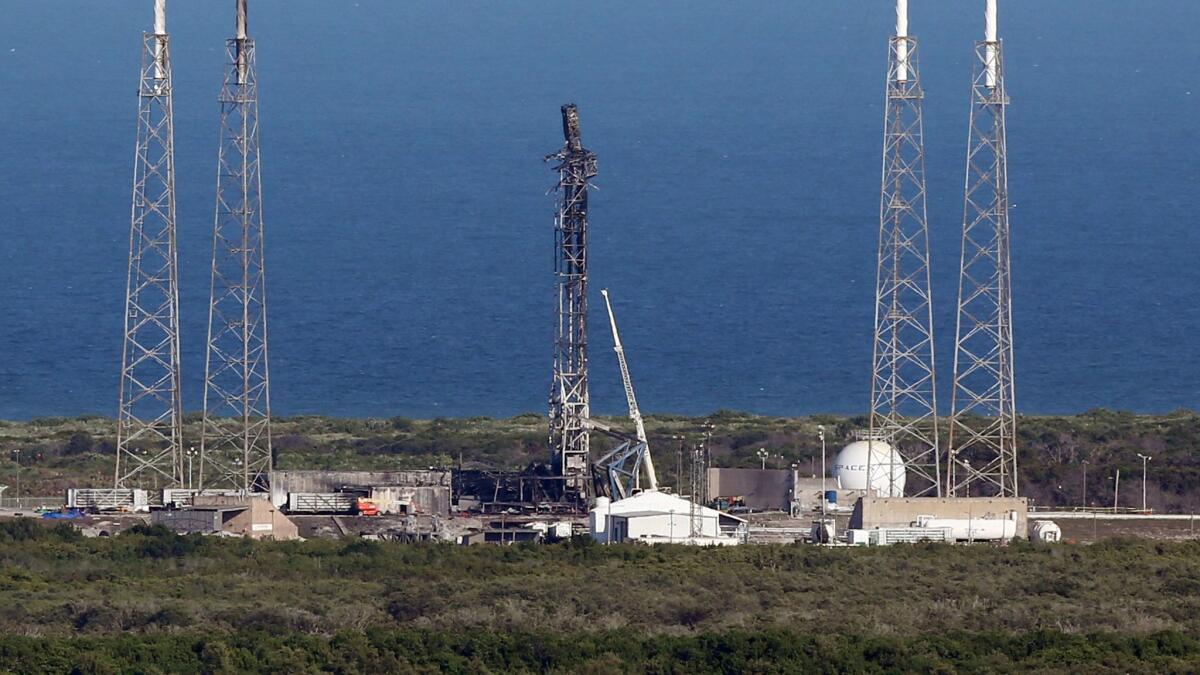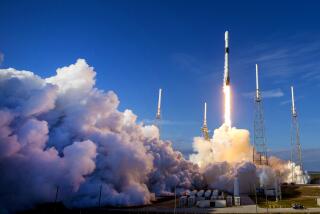SpaceX says failure of helium storage tank caused September rocket explosion

An explosion at SpaceX’s launch pad at Cape Canaveral on Sept. 1, 2016, sent clouds of smoke into the sky and set off a social media storm.
Four months after a Falcon 9 rocket exploded on a Florida launch pad, SpaceX has determined that the cause was a failed composite overwrapped pressure vessel used to store liquid helium.
In the final update to its investigation released Monday, the Hawthorne space company said one of three such tanks in the rocket’s larger, second-stage liquid oxygen tank failed, probably after a buildup of liquid oxygen between the vessel’s aluminum inner liner and its carbon overwrap ignited.
In November, SpaceX Chief Executive Elon Musk described the cause of the explosion as something that has “never been encountered before in the history of rocketry.”
The company said its accident investigation team — made up of officials from SpaceX, NASA, the National Transportation Safety Board, the U.S. Air Force, the Federal Aviation Administration and industry experts — found “buckles,” or valleys, in the vessels’ inner liners.

The SpaceX launch complex at Cape Canaveral Air Force Station in Florida was damaged after a Falcon 9 rocket exploded in September.
Super-chilled liquid oxygen can gather in buckles, and when pressurized, the oxygen can get trapped. Then, “breaking fibers or friction can ignite the oxygen in the overwrap,” causing the vessel to fail, SpaceX said.
The company also said the loading temperature of the helium was cold enough to create solid oxygen, “which exacerbates the possibility of oxygen becoming trapped as well as the likelihood of friction ignition.”
To fix this issue in the short term, SpaceX said it will change the configuration of the composite overwrapped pressure vessels “to allow warmer temperature helium to be loaded.” It will also change helium loading operations to a “prior flight proven configuration” that is based on procedures that were used in hundreds of successful loads.
SpaceX plans to eventually change the design of the vessels to prevent buckles, which the company said will allow for faster loading operations.
The company is now targeting Jan. 8 for its return to flight, pending FAA approval. SpaceX plans to launch 10 satellites for Iridium Communications Inc. from Vandenberg Air Force Base.
More to Read
Sign up for Essential California
The most important California stories and recommendations in your inbox every morning.
You may occasionally receive promotional content from the Los Angeles Times.










